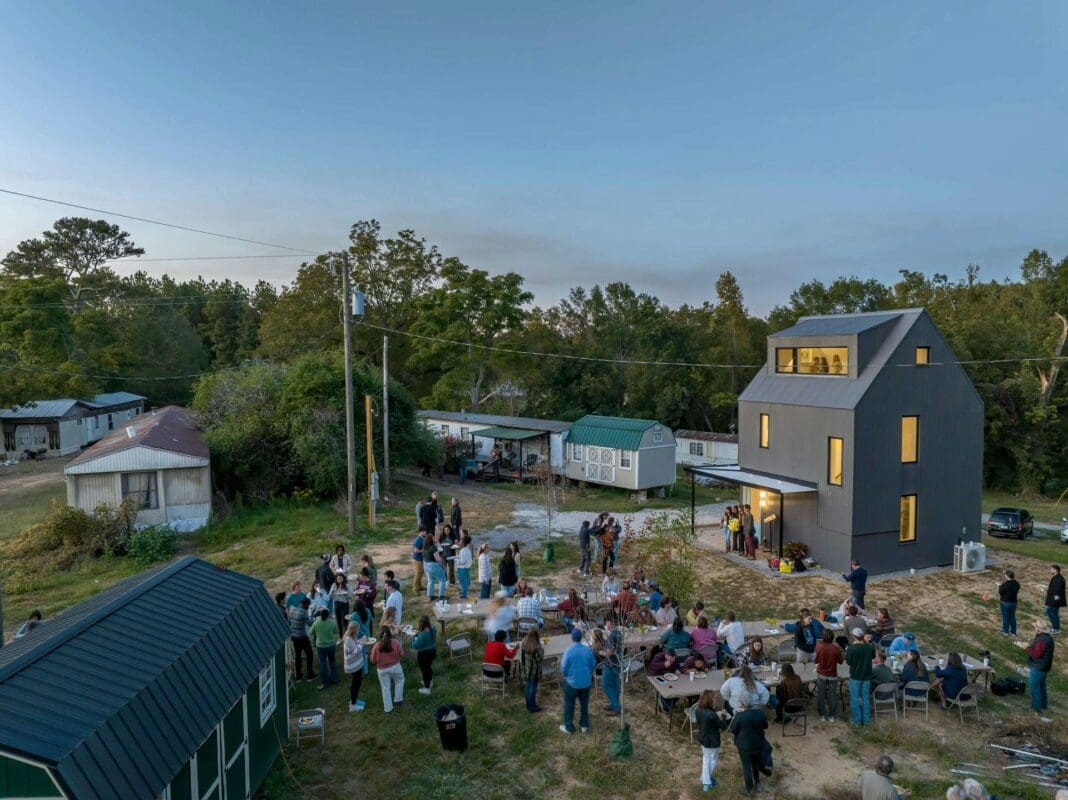Imagine your parents leave you and your siblings a share of land that’s been in your family for generations. Several of your relatives already live on the land, and you’d like to do the same; but you can’t get a loan to build or renovate a home without permission from all the relatives who also share ownership. And at any moment, another heir could sell their share, triggering a court-ordered sale that could force you off the land – and lose everything you’ve invested in.
This is the reality of what’s known as heirs’ property: land passed down informally, without clear wills or deeds, which results in a “tangled” or “clouded” title.
It’s more common than you might think in the U.S., especially in rural areas, and it presents significant challenges to long-term housing stability.
Research shows that within 44 states and the District of Columbia, there are an estimated 508,371 heirs’ properties, with an assessed value of US$32 billion. (There wasn’t reliable enough data in six states.)
It’s more of an issue in some states, such as Alabama. But it’s also a problem in cities such as New York City and Philadelphia.
Because it’s so difficult to finance home construction on this land, sell it or leverage it, heirs’ property can leave families vulnerable to exploitation and perpetuate cycles of poverty. Despite these challenges, many families have nonetheless lived together and supported one another on shared land for generations.
As faculty and collaborators with Auburn University’s Rural Studio, we study heirs’ property and its role in shaping housing access. Based in Hale County, Alabama, Rural Studio has completed over 200 projects – many of them homes built on heirs’ property – providing critical housing for families facing complex land ownership challenges.
The lack of a clear will or deed often happens due to inadequate access to – and distrust of – the legal system.
Once the land is passed down to the next generation, the heirs are known as “tenants in common,” meaning they own an undivided interest in the entire property. As the property continues to pass down from generation to generation, the number of tenants in common increases exponentially.
Without clear title, no single person or group can make decisions about the property. Every heir must legally sign off on any action, which makes it nearly impossible to secure traditional forms of financing, obtain insurance, access disaster relief, or use the land as collateral.
Those living on the land often pay their share of property taxes, but distant or unaware heirs might not, which puts the entire property at risk of being lost through a tax lien sale. This leaves families with property in “tangled” status exposed to predatory land acquisition practices that often lead to land loss.
Any tenant in common can sell their share to an outside party. These outside parties – either individuals or companies – can then request a court to order what’s called a partition by sale, which can push every other owner off the land.
Imagine three siblings inherit a piece of land from their parents and are now tenants in common. One sibling sells their share to a real estate investor. That investor then goes to court and requests a partition by sale. The court then orders the entire property sold and the proceeds split among the owners, effectively forcing the other two siblings off the land, even if they wanted to keep it.
Such tactics are especially common in the Black Belt region of the U.S., which covers Mississippi, Alabama, Georgia and South Carolina; as such, they disproportionately affect Black Americans.
Our research in Hale County, Alabama, finds that Black families in particular have supported one another for generations while living on heirs’ property.
These multigenerational kinship networks rely on one another for child care, elder care, food, transportation and shared utility costs. But the value of this sort of living situation goes beyond social and economic benefits. The land can be woven into family lore or be steeped in the history of the surrounding area.
So, despite the legal and financial challenges, many extended families will do whatever they can to continue living together on their land. Even a small stake in heirs’ property offers connection to the past and a place to return home in the future.
These informal kinship networks can provide support and resilience in ways that traditional forms of land and homeownership do not. Putting all of the people who own the land on the title – what’s known as “clearing title” – is not only costly and time-consuming, but it also often requires dividing up the property into smaller parcels, which can prevent some family members from living on the land altogether.
Meanwhile, traditional legal and financial products – think mortgages and land-use agreements with farmers – tend to be structured with sole ownership in mind. Most banks and institutions simply won’t lend to heirs’ property with tangled titles.
There have been recent efforts to protect these informal arrangements. The Uniform Partition of Heirs Property Act, which has been enacted in 25 states, ensures due process and sets up safeguards against immediate partition by sale actions.
For example, if a suit is brought by a co-owner, a fair market value appraisal – or an agreed-upon value by all parties – must be conducted. The other shareholders of the land also have the option to buy out the shareholder bringing the suit. Under the statute, additional partition methods may be considered. And if a sale is required, it’s done on the open market.
Many organizations are working to address issues related to heirs’ property and tangled titles. Most of the work centers on clearing title, establishing shared land agreements and teaching landowners how to avoid having their property fall into a tangled title situation. For example, the Florida Housing Coalition, Housing Assistance Council and the Alabama Heirs Property Alliance are actively engaged in community education, legal support, data mapping and policy advocacy.
Many rural families on heirs’ property have limited pathways to homeownership. Financial constraints, limited access to quality housing options and lot restrictions have often forced residents to settle for older, substandard, manufactured homes. Small utility sheds have even begun to replace broken-down trailer homes in many rural areas.
There’s clearly a need for safe, durable housing that enables these families to build generational wealth. And that’s where Rural Studio comes in.
Building new housing or renovating existing structures means dealing with a web of zoning laws, building codes and land development ordinances, which are all tied to financing and lending systems. While many efforts to address heirs’ property aim to change legal policies, we approach this issue through housing.
We use what we call a “build first” strategy. Using funds from research grants and donations, we simply start building on heirs’ properties with the permission of families. In the process, we show that if tangled titles were no longer an obstacle, much more housing could be built.
One of our recent Rural Studio projects is the 18×18 House, a compact, multistory home built for a young man living on heirs’ property in Alabama.
The home is nestled between several other family members’ homes. We had to work around existing electrical lines, a septic field, roads and steep topography. Despite these site constraints, the house is an ideal starter home: big enough for the young man and a future partner to live comfortably on the family plot. If he ever decides to leave, other family members can move in.
Rather than focusing on one-off products, our goal with the 18×18 House is to develop replicable housing prototypes that respond to the realities of intergenerational living on family land. We also hope that tangible housing will help policymakers understand the value of reform.
The question isn’t whether design can respond to these challenges, but how it can lead by pushing antiquated regulatory and legal frameworks to evolve.
This article is republished from The Conversation, a nonprofit, independent news organization bringing you facts and trustworthy analysis to help you make sense of our complex world. It was written by: Jennifer Pindyck, Auburn University; Christian Ayala Lopez, Auburn University, and Rusty Smith, Auburn University
Read more: Believe it or not, there was a time when the US government built beautiful homes for working-class Americans to deal with a housing crisis In many of Appalachia’s flood-ravaged areas, residents have little choice but rebuild in risky locations Why building more homes won’t solve the affordable housing problem for the millions of people who need it most
Jennifer Pindyck receives funding from Fannie Mae, Wells Fargo and the Center for Architecture, in partnership with AIA New York. She is affiliated with the Association of Collegiate Schools of Architecture and is a registered architect in the state of Georgia.
Christian Ayala Lopez work is funded through a diverse range of organizations such as Fannie Mae, USDA, and Center for Architecture NY. He is affiliated to Association of Collegiate Schools of Architecture, National Council of Architectural Registration Boards, and member of Florida Housing Coalition.
Rusty Smith receives funding from Fannie Mae, USDA, Wells Fargo and Regions Bank. He is affiliated with the Housing Assistance Council, the American Institute of Architects, the Association of Collegiate Schools of Architecture, the National Renewable Energy Laboratory Innovation Incubator, the EPA Collegiate/Underserved Community Partnership and the Bipartisan Policy Center. 











